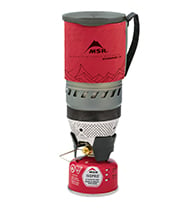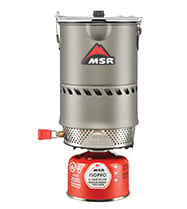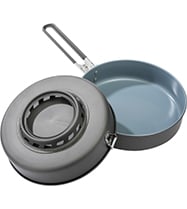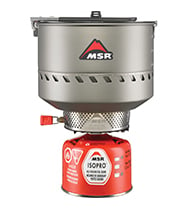MSR Reactor vs. WindBurner: What’s the Difference?
You may have heard of our two award-winning stove systems, the WindBurner® Personal Stove System and the Reactor® Stove System. But did you know that they are built around some of the same award-winning technology, including a unique radiant burner, a pressure regulator and a windproof design? So what’s the difference between the two systems? Is the newer WindBurner simply the Reactor’s little brother? How does their performance really stack up? And which of these stove systems is best for which trips? All good questions. Let’s take a closer look at the differences between the MSR Reactor and WindBurner stove systems.
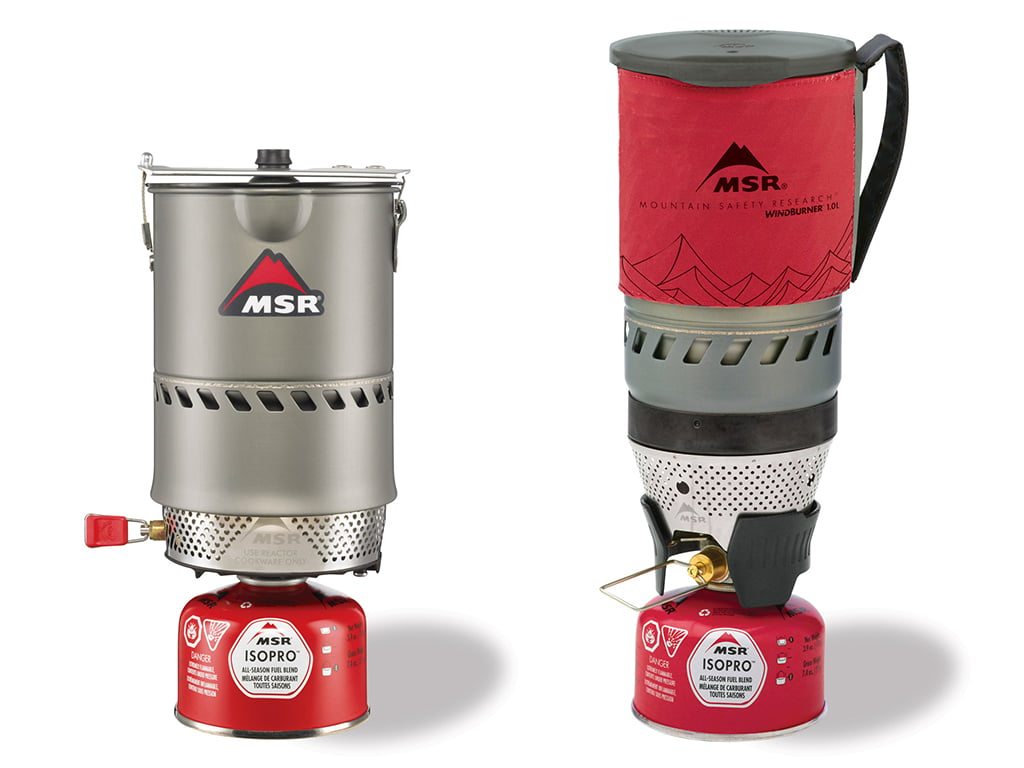
How are the MSR Reactor and WindBurner Stove Systems similar?
The WindBurner and Reactor stove systems are similar in some important ways, but they’re also different in ways that are equally crucial. So, let’s boil it down (sorry, not sorry).
First, let’s look at how they operate. The WindBurner and the Reactor stove systems are both built around an ultra-efficient radiant burner. In addition, they both are internally pressure-regulated to ensure consistent output (and thus fast boil times) across a range of temperatures and conditions.
They are also both engineered to operate on 100% primary air. This allows for a windproof pot that encloses the burner, protecting it from wind and maximizing heat output. As a result, the WindBurner and the Reactor are both incredibly fast, fuel-efficient and virtually windproof.
Then there’s the top-shelf materials and construction that go into them, which provide superior durability and reliability in the field. Therefore, both the WindBurner and the Reactor are designed, engineered and built to the absolute highest quality.
So, yes, the WindBurner borrows a good deal of technology from the world-renowned Reactor, which has proven itself time and again in some of the harshest places on the planet.
And both systems are assembled and tested in the U.S. at MSR’s own factory in Seattle, WA.
How are they different?
The Reactor isn’t for everyone—it was never intended to be. The Reactor was originally engineered to be an alpinist’s tool, an unapologetic snow-melting powerhouse; basically, a purpose-built rocket ship of a stove system that delivers in the most demanding conditions. Because the longer it takes a mountaineer to melt snow for hydration, the greater their risk for altitude sickness.
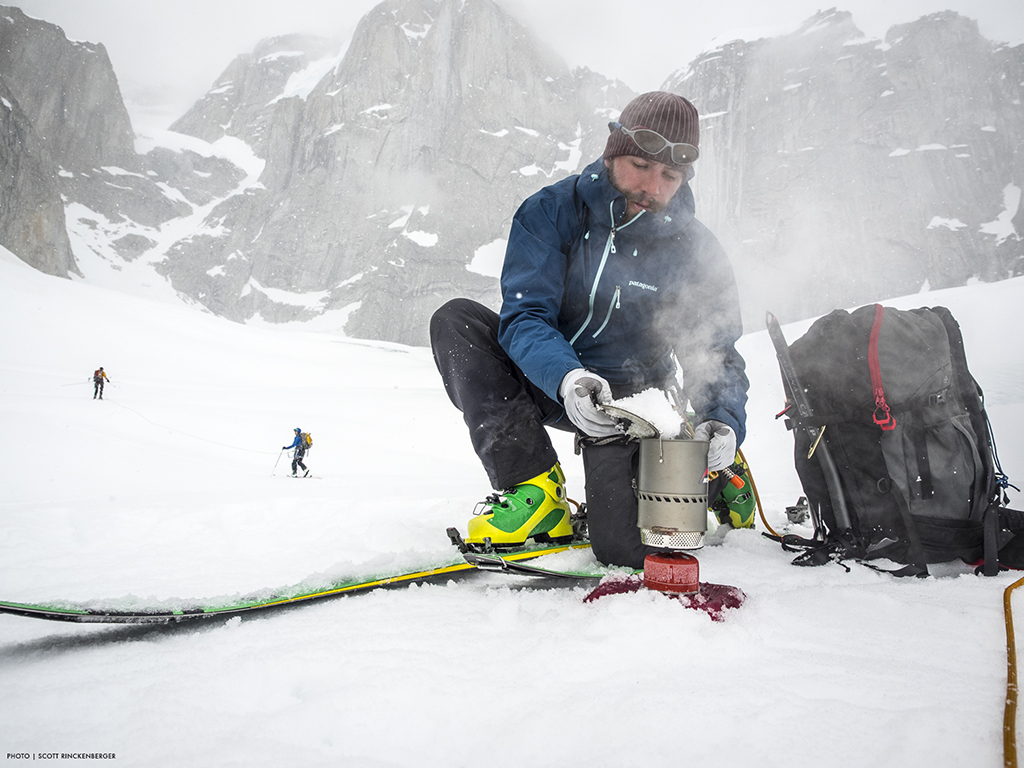
In contrast, the WindBurner Personal stove system truly is a personal unit, with features designed to bring ultimate convenience to solo travelers and backpacking pairs.
Like the Reactor, the WindBurner Personal is an all-in-one system, but it’s even more compact. Its features are tailored to meet the needs of one or two travelers heading into the backcountry, camping in the frontcountry, and anyone who’s trying to cook a hot meal in places where real weather can happen.
The WindBurner stove scales down from the Reactor in both heat output and form factor. Where the Reactor blasts out 9,000 BTU/hr, the WindBurner throttles back to 7,000 and makes up the efficiency by sipping fuel more slowly.
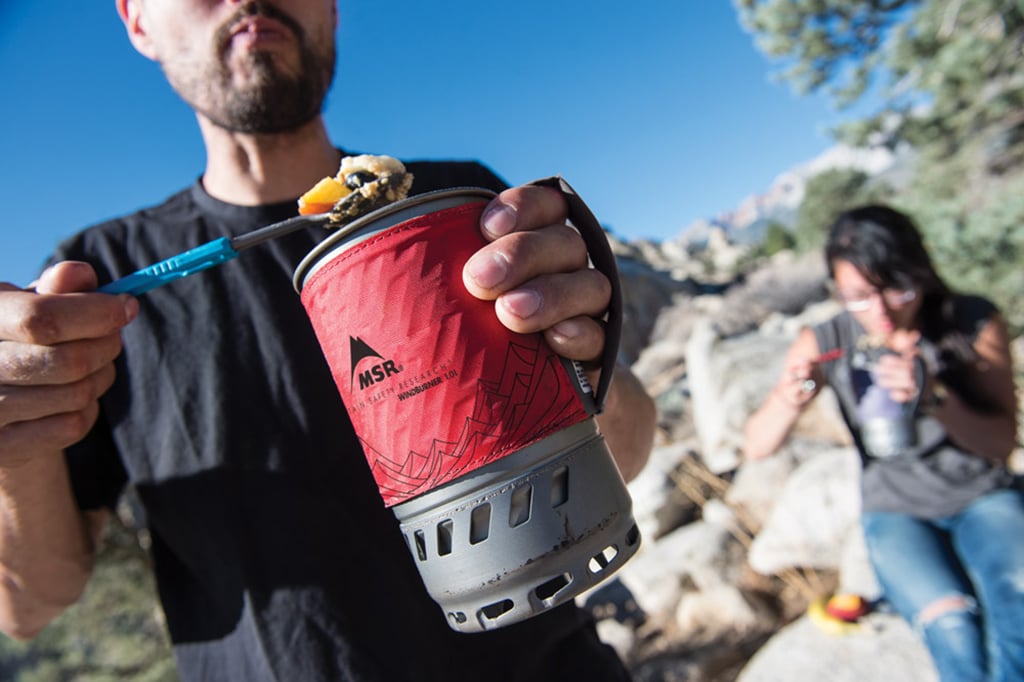
When it comes to form, the Reactor includes cookware with a traditional side-mount pot handle; it’s a very utilitarian design. In contrast, the WindBurner Personal offers a high-tech, integrated cook-and-eat solution—its pot features an insulated cozy, and a drinking and straining lid allowing it to double as a mug and eating vessel. The WindBurner Personal pot also locks onto its stove burner for improved stability, and it features a heat-resistant grip on the burner that makes it easy to hold while you’re removing the pot.
The WindBurner Personal is meant to be the ideal stove for minimalist backpackers and anyone who wants to cook up a personal meal fast. You could say the WindBurner is a hot cup of morning coffee in camp, while the Reactor is a snow-melting, electrolyte-refueling station on an exposed Alaskan ledge.
Finally, the WindBurner product line offers more pot styles and system sizes than the Reactor family. Because the WindBurner was designed for all kinds of backcountry camping and cooking (not just mountaineering like the Reactor), we’ve developed a WindBurner skillet, a 1.8L Duo Pot, 2.5L sauce pot and a large 4.5L Stock Pot to satisfy almost any cooking need while still providing the windproof, ultra-efficient design. For those larger pots, the WindBurner’s remote-style canister stove, available in a duo or group offering, provides the necessary stability for secure cooking.
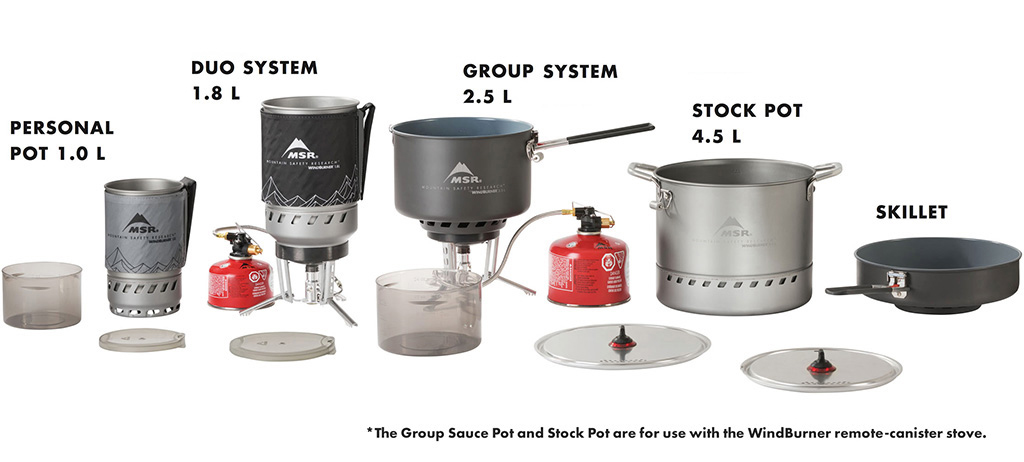
Which is the Right Stove for You?
If you’re looking for the ideal alpinist stove for melting snow and boiling water fast on everything from alpine climbs to spring ski traverses, the Reactor is your ally.
If you’re looking for something with more of a personal touch, something that can double as a mug for eating and drinking as well, the WindBurner Personal is your ticket. If you’re going to be cooking a variety of meals in the backcountry, the WindBurner Duo or Group Stove Systems offer more options for pot sizes and styles, thanks to their remote-style canister stove.
So there you have it.
We’re extremely proud of these two stove systems. They share more than technological DNA—they also share MSR’s deep commitment to quality and innovation. And each has its place in MSR’s legacy and line up of the world’s best stoves.
Related Posts:
- A Guide to MSR Backpacking Stoves
- The Guide to WindBurner Cookware & Accessories
- Spark of Invention: The Origin Story of MSR’s Reactor Stove
Updated. Originally Published October 20th, 2014.
 Steve is the tallest man** to summit Mt. Rainier in the history of mountaineering. He’s been playing in the outdoors since he could crawl, and especially enjoys extended wilderness adventures. Some of his favorite trips have been sailing across the Pacific and back with his dad, big wall climbing in Yosemite and Zion in a homemade (read: dodgy) portaledge, mountaineering in California, Washington, Alaska and New Zealand, hiking the John Muir Trail, and most recently becoming the tallest man** to summit Tiger Mountain (elev. 3,005’/916 m) with his wife and son. He has been developing outdoor equipment on his own and professionally for over a decade.
Steve is the tallest man** to summit Mt. Rainier in the history of mountaineering. He’s been playing in the outdoors since he could crawl, and especially enjoys extended wilderness adventures. Some of his favorite trips have been sailing across the Pacific and back with his dad, big wall climbing in Yosemite and Zion in a homemade (read: dodgy) portaledge, mountaineering in California, Washington, Alaska and New Zealand, hiking the John Muir Trail, and most recently becoming the tallest man** to summit Tiger Mountain (elev. 3,005’/916 m) with his wife and son. He has been developing outdoor equipment on his own and professionally for over a decade.
**This is an unsubstantiated claim.

